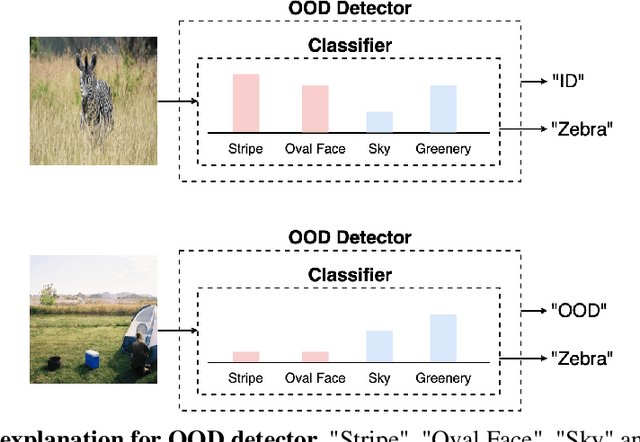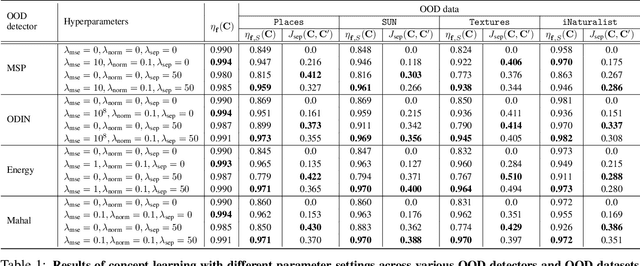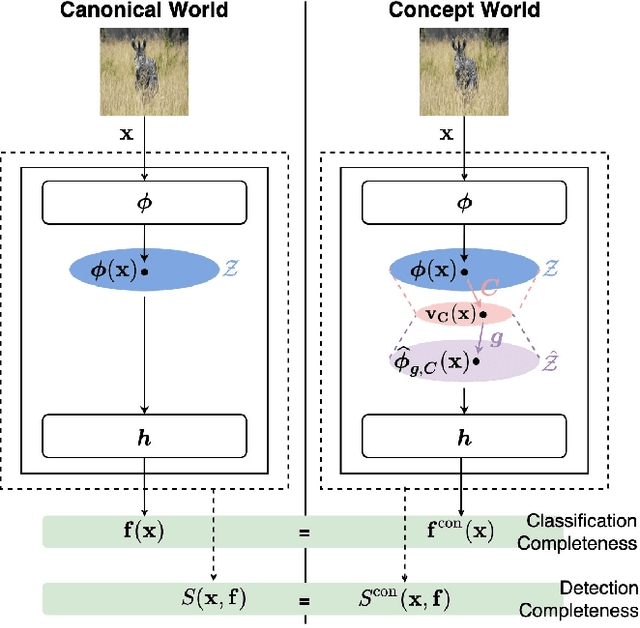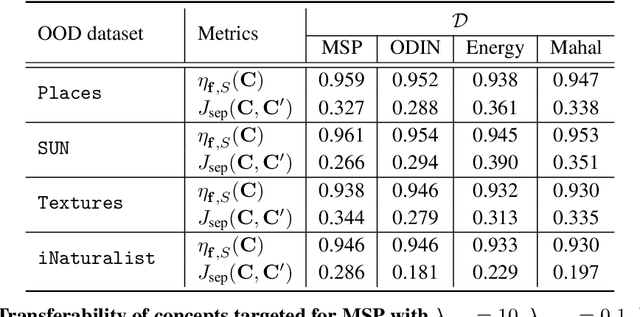Jiefeng Chen
DocLens : A Tool-Augmented Multi-Agent Framework for Long Visual Document Understanding
Nov 14, 2025Abstract:Comprehending long visual documents, where information is distributed across extensive pages of text and visual elements, is a critical but challenging task for modern Vision-Language Models (VLMs). Existing approaches falter on a fundamental challenge: evidence localization. They struggle to retrieve relevant pages and overlook fine-grained details within visual elements, leading to limited performance and model hallucination. To address this, we propose DocLens, a tool-augmented multi-agent framework that effectively ``zooms in'' on evidence like a lens. It first navigates from the full document to specific visual elements on relevant pages, then employs a sampling-adjudication mechanism to generate a single, reliable answer. Paired with Gemini-2.5-Pro, DocLens achieves state-of-the-art performance on MMLongBench-Doc and FinRAGBench-V, surpassing even human experts. The framework's superiority is particularly evident on vision-centric and unanswerable queries, demonstrating the power of its enhanced localization capabilities.
SETS: Leveraging Self-Verification and Self-Correction for Improved Test-Time Scaling
Jan 31, 2025



Abstract:Recent advancements in Large Language Models (LLMs) have created new opportunities to enhance performance on complex reasoning tasks by leveraging test-time computation. However, conventional approaches such as repeated sampling with majority voting or reward model scoring, often face diminishing returns as test-time compute scales, in addition to requiring costly task-specific reward model training. In this paper, we present Self-Enhanced Test-Time Scaling (SETS), a novel method that leverages the self-verification and self-correction capabilities of recent advanced LLMs to overcome these limitations. SETS integrates sampling, self-verification, and self-correction into a unified framework, enabling efficient and scalable test-time computation for improved capabilities at complex tasks. Through extensive experiments on challenging planning and reasoning benchmarks, compared to the alternatives, we demonstrate that SETS achieves significant performance improvements and more favorable test-time scaling laws.
Astute RAG: Overcoming Imperfect Retrieval Augmentation and Knowledge Conflicts for Large Language Models
Oct 09, 2024



Abstract:Retrieval-Augmented Generation (RAG), while effective in integrating external knowledge to address the limitations of large language models (LLMs), can be undermined by imperfect retrieval, which may introduce irrelevant, misleading, or even malicious information. Despite its importance, previous studies have rarely explored the behavior of RAG through joint analysis on how errors from imperfect retrieval attribute and propagate, and how potential conflicts arise between the LLMs' internal knowledge and external sources. We find that imperfect retrieval augmentation might be inevitable and quite harmful, through controlled analysis under realistic conditions. We identify the knowledge conflicts between LLM-internal and external knowledge from retrieval as a bottleneck to overcome in the post-retrieval stage of RAG. To render LLMs resilient to imperfect retrieval, we propose Astute RAG, a novel RAG approach that adaptively elicits essential information from LLMs' internal knowledge, iteratively consolidates internal and external knowledge with source-awareness, and finalizes the answer according to information reliability. Our experiments using Gemini and Claude demonstrate that Astute RAG significantly outperforms previous robustness-enhanced RAG methods. Notably, Astute RAG is the only approach that matches or exceeds the performance of LLMs without RAG under worst-case scenarios. Further analysis reveals that Astute RAG effectively resolves knowledge conflicts, improving the reliability and trustworthiness of RAG systems.
Adaptation with Self-Evaluation to Improve Selective Prediction in LLMs
Oct 18, 2023Abstract:Large language models (LLMs) have recently shown great advances in a variety of tasks, including natural language understanding and generation. However, their use in high-stakes decision-making scenarios is still limited due to the potential for errors. Selective prediction is a technique that can be used to improve the reliability of the LLMs by allowing them to abstain from making predictions when they are unsure of the answer. In this work, we propose a novel framework for adaptation with self-evaluation to improve the selective prediction performance of LLMs. Our framework is based on the idea of using parameter-efficient tuning to adapt the LLM to the specific task at hand while improving its ability to perform self-evaluation. We evaluate our method on a variety of question-answering (QA) datasets and show that it outperforms state-of-the-art selective prediction methods. For example, on the CoQA benchmark, our method improves the AUACC from 91.23% to 92.63% and improves the AUROC from 74.61% to 80.25%.
Two Heads are Better than One: Towards Better Adversarial Robustness by Combining Transduction and Rejection
May 27, 2023Abstract:Both transduction and rejection have emerged as important techniques for defending against adversarial perturbations. A recent work by Tram\`er showed that, in the rejection-only case (no transduction), a strong rejection-solution can be turned into a strong (but computationally inefficient) non-rejection solution. This detector-to-classifier reduction has been mostly applied to give evidence that certain claims of strong selective-model solutions are susceptible, leaving the benefits of rejection unclear. On the other hand, a recent work by Goldwasser et al. showed that rejection combined with transduction can give provable guarantees (for certain problems) that cannot be achieved otherwise. Nevertheless, under recent strong adversarial attacks (GMSA, which has been shown to be much more effective than AutoAttack against transduction), Goldwasser et al.'s work was shown to have low performance in a practical deep-learning setting. In this paper, we take a step towards realizing the promise of transduction+rejection in more realistic scenarios. Theoretically, we show that a novel application of Tram\`er's classifier-to-detector technique in the transductive setting can give significantly improved sample-complexity for robust generalization. While our theoretical construction is computationally inefficient, it guides us to identify an efficient transductive algorithm to learn a selective model. Extensive experiments using state of the art attacks (AutoAttack, GMSA) show that our solutions provide significantly better robust accuracy.
Stratified Adversarial Robustness with Rejection
May 12, 2023



Abstract:Recently, there is an emerging interest in adversarially training a classifier with a rejection option (also known as a selective classifier) for boosting adversarial robustness. While rejection can incur a cost in many applications, existing studies typically associate zero cost with rejecting perturbed inputs, which can result in the rejection of numerous slightly-perturbed inputs that could be correctly classified. In this work, we study adversarially-robust classification with rejection in the stratified rejection setting, where the rejection cost is modeled by rejection loss functions monotonically non-increasing in the perturbation magnitude. We theoretically analyze the stratified rejection setting and propose a novel defense method -- Adversarial Training with Consistent Prediction-based Rejection (CPR) -- for building a robust selective classifier. Experiments on image datasets demonstrate that the proposed method significantly outperforms existing methods under strong adaptive attacks. For instance, on CIFAR-10, CPR reduces the total robust loss (for different rejection losses) by at least 7.3% under both seen and unseen attacks.
ASPEST: Bridging the Gap Between Active Learning and Selective Prediction
Apr 07, 2023Abstract:Selective prediction aims to learn a reliable model that abstains from making predictions when the model uncertainty is high. These predictions can then be deferred to a human expert for further evaluation. In many real-world scenarios, however, the distribution of test data is different from the training data. This results in more inaccurate predictions, necessitating increased human labeling, which is difficult and expensive in many scenarios. Active learning circumvents this difficulty by only querying the most informative examples and, in several cases, has been shown to lower the overall labeling effort. In this work, we bridge the gap between selective prediction and active learning, proposing a new learning paradigm called active selective prediction which learns to query more informative samples from the shifted target domain while increasing accuracy and coverage. For this new problem, we propose a simple but effective solution, ASPEST, that trains ensembles of model snapshots using self-training with their aggregated outputs as pseudo labels. Extensive experiments on several image, text and structured datasets with domain shifts demonstrate that active selective prediction can significantly outperform prior work on selective prediction and active learning (e.g. on the MNIST$\to$SVHN benchmark with the labeling budget of 100, ASPEST improves the AUC metric from 79.36% to 88.84%) and achieves more optimal utilization of humans in the loop.
Is forgetting less a good inductive bias for forward transfer?
Mar 14, 2023



Abstract:One of the main motivations of studying continual learning is that the problem setting allows a model to accrue knowledge from past tasks to learn new tasks more efficiently. However, recent studies suggest that the key metric that continual learning algorithms optimize, reduction in catastrophic forgetting, does not correlate well with the forward transfer of knowledge. We believe that the conclusion previous works reached is due to the way they measure forward transfer. We argue that the measure of forward transfer to a task should not be affected by the restrictions placed on the continual learner in order to preserve knowledge of previous tasks. Instead, forward transfer should be measured by how easy it is to learn a new task given a set of representations produced by continual learning on previous tasks. Under this notion of forward transfer, we evaluate different continual learning algorithms on a variety of image classification benchmarks. Our results indicate that less forgetful representations lead to a better forward transfer suggesting a strong correlation between retaining past information and learning efficiency on new tasks. Further, we found less forgetful representations to be more diverse and discriminative compared to their forgetful counterparts.
* Published as a conference paper at ICLR 2023
The Trade-off between Universality and Label Efficiency of Representations from Contrastive Learning
Feb 28, 2023



Abstract:Pre-training representations (a.k.a. foundation models) has recently become a prevalent learning paradigm, where one first pre-trains a representation using large-scale unlabeled data, and then learns simple predictors on top of the representation using small labeled data from the downstream tasks. There are two key desiderata for the representation: label efficiency (the ability to learn an accurate classifier on top of the representation with a small amount of labeled data) and universality (usefulness across a wide range of downstream tasks). In this paper, we focus on one of the most popular instantiations of this paradigm: contrastive learning with linear probing, i.e., learning a linear predictor on the representation pre-trained by contrastive learning. We show that there exists a trade-off between the two desiderata so that one may not be able to achieve both simultaneously. Specifically, we provide analysis using a theoretical data model and show that, while more diverse pre-training data result in more diverse features for different tasks (improving universality), it puts less emphasis on task-specific features, giving rise to larger sample complexity for down-stream supervised tasks, and thus worse prediction performance. Guided by this analysis, we propose a contrastive regularization method to improve the trade-off. We validate our analysis and method empirically with systematic experiments using real-world datasets and foundation models.
Concept-based Explanations for Out-Of-Distribution Detectors
Mar 04, 2022



Abstract:Out-of-distribution (OOD) detection plays a crucial role in ensuring the safe deployment of deep neural network (DNN) classifiers. While a myriad of methods have focused on improving the performance of OOD detectors, a critical gap remains in interpreting their decisions. We help bridge this gap by providing explanations for OOD detectors based on learned high-level concepts. We first propose two new metrics for assessing the effectiveness of a particular set of concepts for explaining OOD detectors: 1) detection completeness, which quantifies the sufficiency of concepts for explaining an OOD-detector's decisions, and 2) concept separability, which captures the distributional separation between in-distribution and OOD data in the concept space. Based on these metrics, we propose a framework for learning a set of concepts that satisfy the desired properties of detection completeness and concept separability and demonstrate the framework's effectiveness in providing concept-based explanations for diverse OOD techniques. We also show how to identify prominent concepts that contribute to the detection results via a modified Shapley value-based importance score.
 Add to Chrome
Add to Chrome Add to Firefox
Add to Firefox Add to Edge
Add to Edge